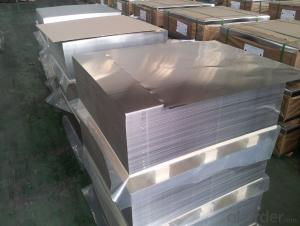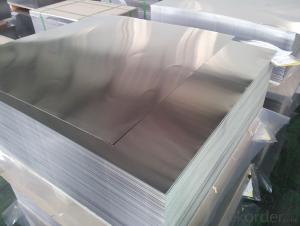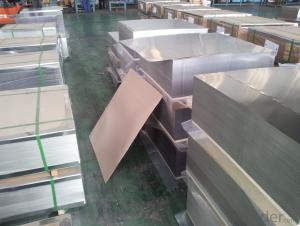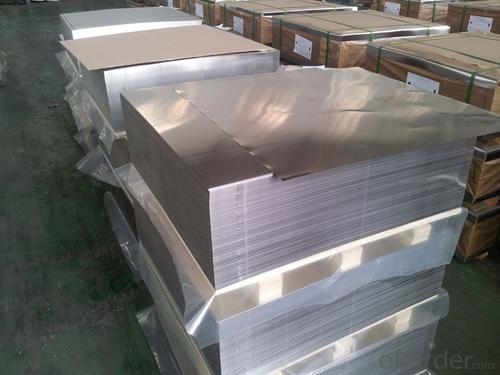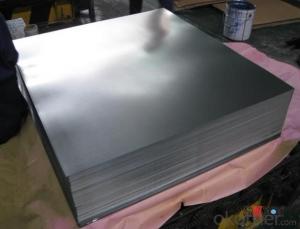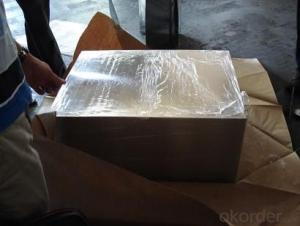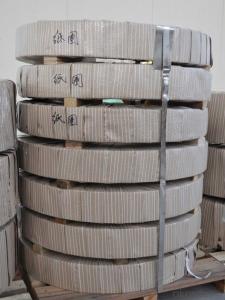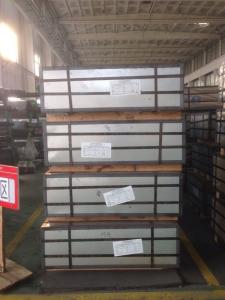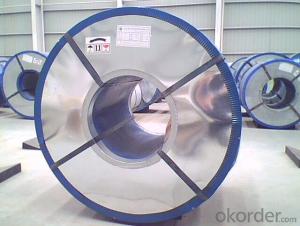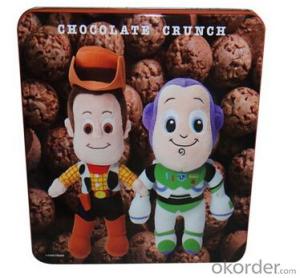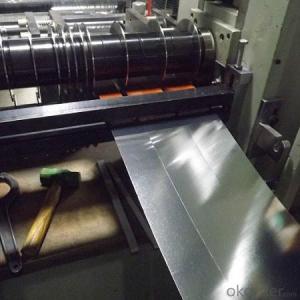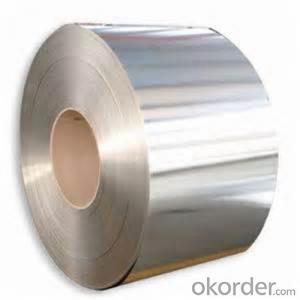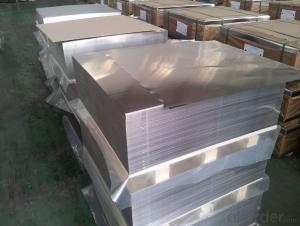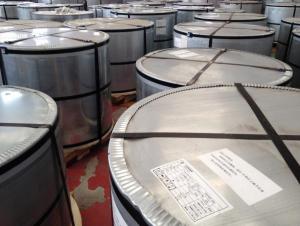High Quality of Tinplate for Food Cans Containers
- Loading Port:
- China Main Port
- Payment Terms:
- TT OR LC
- Min Order Qty:
- -
- Supply Capability:
- -
OKorder Service Pledge
OKorder Financial Service
You Might Also Like
Our tin plate (TP) products are made by coating tin using electrolysis on the surface of thin coldrolled steel sheet (black plates), with a thickness of 0.14~0.6 mm. Its shiny surface finish, superb corrosion resistance and formability make tin plates an ideal choice for the food industry and industrial parts producers. Our tin free steel sheet (ECCS) is widely accepted as a more economical substitute for the tin coated steel. Our TP/TFS products are widely used in the production of 3-piece and 2piece (D&I, DRD) cans as well as can lids and bottoms. Our products serve a variety of purposes, including material for steel EOE, toys, and electronic parts.
Our Tinplates Specification:
Standard: ISO 11949 -1995, GB/T2520-2000,JIS G3303,ASTM A623, BS EN 10202
Material: MR,SPCC
Thickness:0.15mm - 0.50mm
Width: 600mm -1150mm
Temper: T1-T5
Annealing: BA & CA
Coil Inner Diameter: 508mm
Weight: 6-10 tons/coil 1~1.7 tons/sheets bundle
Passivation:311
Oil: DOS
Surface: Finish,bright,stone,matte,silver
Packing:
1、For sheets: plastic or waterproof paper, metallic cover and angles, steel strips,wooden pallet.
2、For Coils: plastic or waterproof paper,plastic protect plate,steel strips.
Both Prime and Second Quality Are Available!!!
- Q: Can tinplate be used for packaging tobacco products?
- Yes, tinplate can be used for packaging tobacco products. Tinplate is a commonly used material for packaging various products, including tobacco products, due to its durability, resistance to corrosion, and ability to maintain product freshness and quality.
- Q: How is tinplate used in the manufacturing of electronic devices?
- Tinplate is commonly used in the manufacturing of electronic devices as it provides an ideal material for the production of casing and outer components. Its corrosion-resistant properties help protect the internal circuitry from environmental factors, ensuring durability and longevity of the electronic device. Additionally, tinplate's malleability allows for easy shaping and customization, enabling manufacturers to create sleek and aesthetically pleasing designs.
- Q: How does tinplate packaging contribute to product differentiation?
- Tinplate packaging contributes to product differentiation by providing a unique and attractive look that distinguishes a product from its competitors. The use of tinplate allows for creative and eye-catching designs, which can effectively communicate the brand's identity and create a memorable impression on consumers. Additionally, tinplate packaging offers durability and protection, ensuring that the product remains in good condition throughout its shelf life. This enhances the overall perceived value of the product and sets it apart from alternatives, thus contributing to product differentiation.
- Q: How does tinplate affect the overall cost of packaging production?
- Tinplate can significantly affect the overall cost of packaging production. It is a relatively expensive material compared to other packaging options such as cardboard or plastic. The cost of tinplate itself, combined with the additional processes required for its production, can contribute to higher manufacturing costs. However, tinplate offers several advantages such as durability, tamper resistance, and enhanced product protection, which can justify its higher cost for certain products. Additionally, the aesthetic appeal and potential for branding on tinplate packaging can also contribute to increased sales and consumer perception, potentially offsetting the higher production costs. Ultimately, the impact of tinplate on overall packaging cost will depend on the specific requirements, target market, and budget considerations of the product being packaged.
- Q: What are the different ways to open tinplate containers?
- There are several ways to open tinplate containers, including using a can opener, a pair of scissors, a knife, or pulling the tab if it is a pop-top can.
- Q: What are the main regulations governing tinplate recycling?
- The main regulations governing tinplate recycling vary by country and region. However, some common regulations include proper sorting and separation of tinplate from other materials, ensuring safe handling and storage of tinplate waste, and compliance with environmental standards for recycling processes. Additionally, many jurisdictions require proper labeling and documentation for tinplate recycling facilities and may have specific requirements for the disposal of hazardous waste generated during the recycling process.
- Q: How is tinplate stored?
- Tinplate is typically stored in a dry, well-ventilated area to prevent moisture and humidity from causing corrosion. It is advisable to stack the tinplate sheets or rolls on pallets or shelves, ensuring they are kept away from direct contact with the ground to avoid damage. Additionally, it is important to protect the tinplate from any potential sources of scratching or denting during storage.
- Q: Can tinplate be used for coinage?
- No, tinplate cannot be used for coinage as it is not a durable or suitable material for minting coins.
- Q: How is tinplate coated for pharmaceutical packaging?
- Tinplate for pharmaceutical packaging is typically coated using a process known as electrolytic tin coating. This involves immersing the tinplate in an electrolyte solution and passing an electric current through it. The electric current causes tin ions to be deposited onto the surface of the tinplate, creating a thin and uniform layer of tin coating. This coating provides a protective barrier against corrosion and ensures the safety and integrity of the pharmaceutical products packaged within.
- Q: How can the section of the tinplate be maintained without rust?
- Heat the pot, wipe with fat pork and pig skin, over five minutes, and never rust again
Send your message to us
High Quality of Tinplate for Food Cans Containers
- Loading Port:
- China Main Port
- Payment Terms:
- TT OR LC
- Min Order Qty:
- -
- Supply Capability:
- -
OKorder Service Pledge
OKorder Financial Service
Similar products
Hot products
Hot Searches
Related keywords
